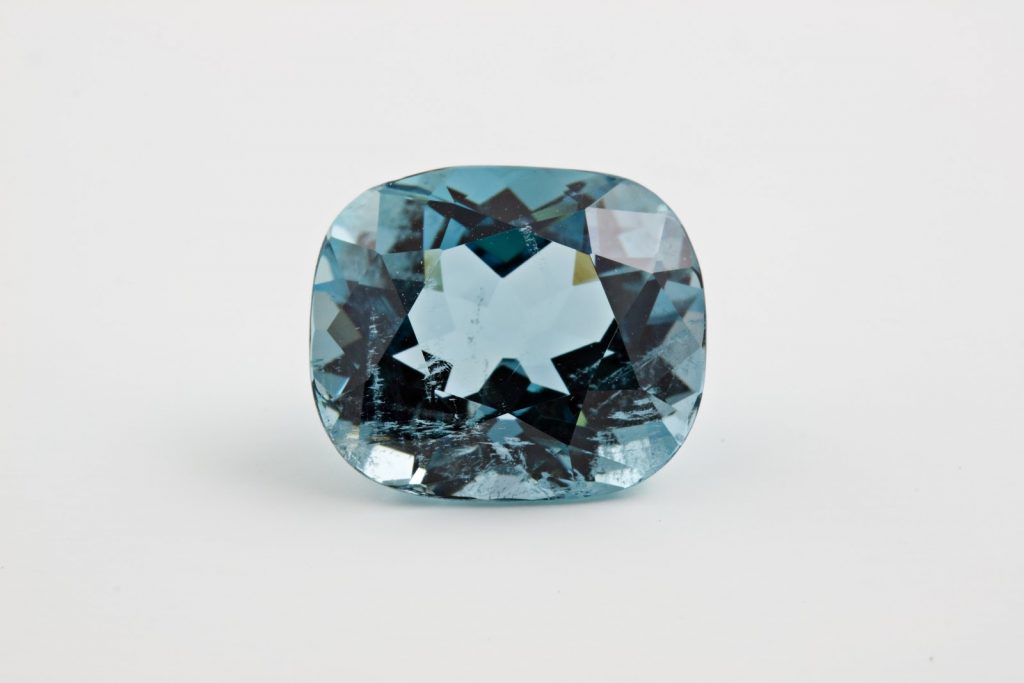Goshenite (Colorless Beryl)


Goshenite is the purest form of beryl possible in terms of its crystal structure. The base chemical formula of any beryl is written as Be3Al2Si6O18, with the elements beryllium, aluminum, silicon, and oxygen. The green colored beryl that creates green beryl and emeralds is caused by trace amounts of chromium and vanadium. While an exact figure cannot be given since the precise amounts of coloring agent vary from emerald to emerald, the amount is less than 1%. This means the actual color of emeralds is white as seen here, instead of green.
These faint differences can also change how the beryl crystal forms. Emeralds usually have flat peaks to their hexagonal bodies, but the Goshenite specimen comes to a point instead.
Actual Beryl Color

In tests like the streak test, a gem of hardness 6 or lower is dragged across an unglazed ceramic plate, referred to as a streak plate. Crystals with a higher hardness are pulverized and smeared on the plate.
The color streak or smear left is the actual gem color, and ideally there is nothing else to alter this color (leftover host rock from the ground, highly included sections with other crystals, other elements contaminating the plate, etc). All varieties of beryl, including morganite, bixbite, heliodor, maxixe, aquamarine, green beryl and emeralds will have a colorless streak. This is because they are colored by various trace elements not part of their core chemistry.
Clarity
One difference between goshenite and emeralds is that goshenite is a Type II gem and emeralds are a Type III. The different types refer to the typical clarity of different gems. Type I gems are frequently clear, Type II gems usually display some inclusions, and Type III gems will nearly always show inclusions. Clarity is judged differently for each type depending on what should be expected of the inclusions in the crystal formation.
Type I

Type II

Type III

Due to the high demand for clarity in gems and how scarce this is in emeralds, exceptionally clear ones go for significant premiums.
Pleochroism

Goshenite is pleochroic, specifically dichroic since it splits light into two main directions inside itself. Unlike the colored beryl varieties, it cannot show this pleochroism in terms of color. Faint doubling inside the gem is visible, especially when compared to a gem that does not split light (glass, spinel, diamonds, etc).
Unlike the calcite example, goshenite has much less visible doubling. It is at most a slightly blurry appearance.
Uses in Jewelry
Goshenite is viable in jewelry, though the absence of color makes it virtually unheard of. In comparison to aquamarine and emeralds, it is unappealing due to its lack of color. In comparison to diamonds, which dominate the market for colorless gems, they do not sparkle the same way. Diamonds show high dispersion, or rainbow colors called fire. Goshenite does not have this high dispersion and has a completely separate appearance. They should be judged the way emeralds and sapphires are judged; as completely separate gems regardless of color, or lack thereof.
